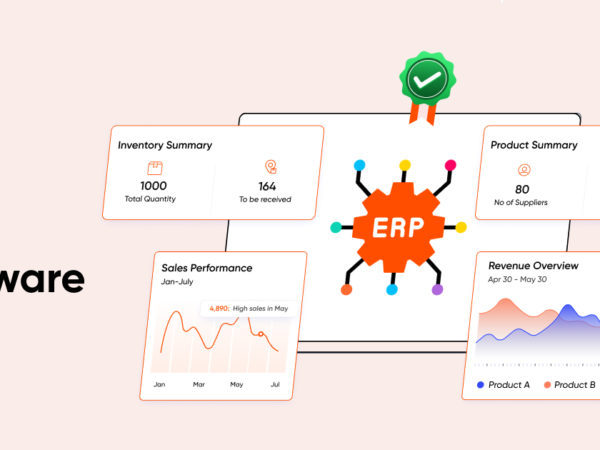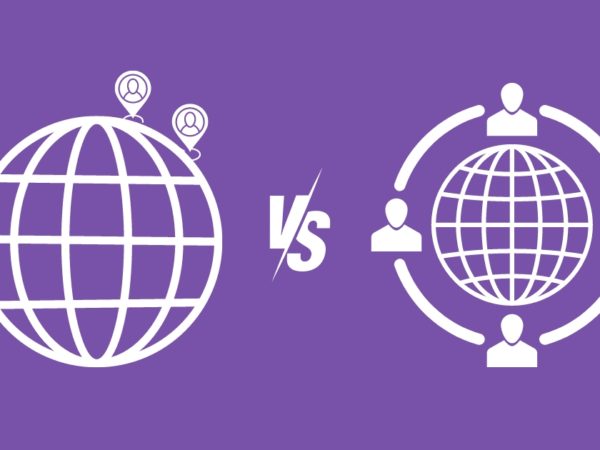Agile software development has completely changed the landscape of software development. It encouraged teamwork, adaptability, and constant refinement.
Agile teams utilize a wide variety of technologies and tools to lift up the development process. So, choosing the right tool can make or break a project’s success.
In today’s fast-paced software development world, effective tools can offer cutting-edge bug detection, issue-tracking features, seamless spring management, automation, and effortless collaboration.
Nowadays, the marketplace is already filled with a plethora of agile software development tools. Yet, it might be difficult to figure out which tool can be the ideal addition to your agile team’s success.
This article seeks to reduce your effort through our list of the best agile software development tools. Ultimately, it will help any agile team in enhancing productivity, communication, collaboration, and software release swiftness.
Why Agile Method Should Be Preferred
Software requirements for a business are always evolving, and this is where the agile methodology can be adapted. It offers a flexible and adaptive approach that meets the requirements of ever-changing software development trends. Besides, companies that are using agile software tools are showing themselves to be open to new ideas and methods.
Maybe your company is facing inefficient processes, poor communication, or a lack of team coordination. On the other hand, your company may be forced to make changes by a new but agile competitor. Or maybe you’re just looking for creative ways to boost output and foster a more enjoyable work atmosphere.
However, team members can release working software in small increments using the agile method. Thus, it guarantees that the end product will ultimately satisfy the customer’s needs. Moreover, it offers an iterative method that ensures that teams can adapt rapidly to changes in project objectives, schedules, and budgets.
How Agile Tools Can Improve Productivity
To reap the full advantages of the Agile approach, it is crucial to make use of the right agile tools. There are several ways in which the use of agile tech can increase efficiency:
Enhancing Communication & Collaboration
Together, the team can work more efficiently thanks to the agile tools that improve communication and collaboration. It reduces misunderstandings and errors by filling up the communication gap.
Moreover, it ensures that all members are on the same page by working as a single hub for all project data. As a result, team members can access all the project requirements, objectives, and tasks in a centralized dashboard.
Tracking Progress & Identifying Bottlenecks
The agile mechanism allows team members to monitor their own progress and spot possible bottlenecks. Thus, they can resolve problems more accurately and rapidly. It also offers automated procedures that assist to simplify operations and minimizing manual labor. Therefore, workers can concentrate on more important tasks, which increases the project’s progress.
Boosting visibility & Transparency
Agile tools boost the visibility and transparency of a project which enhances accountability by reducing project failure. Stakeholders can check updates and provide their input to verify that the project is progressing and meeting expectations.
All things considered, the Agile method & tools are powerful assets that organizations can employ to boost efficiency in their work collaboration. So, embracing agile tools and methods can produce robust software that satisfies customer needs while adapting to business trends.
Here are some incredible Agile tools for boosting team efficiency and collaboration:
Jira
Jira is a project management tool that follows the agile method to assist teams in managing projects more efficiently. This web-based tool is used for tracking project-related issues and progression. It offers some powerful features that make it popular among most organizations within the tech industry.
<img alt="YouTube video" data-pin-nopin="true" data-src="https://kirelos.com/wp-content/uploads/2023/03/echo/maxresdefault.jpg6411bf56c93ae.jpg" height="720" nopin="nopin" src="data:image/svg xml,” width=”1280″>
Key Features:
- Offers a centralized dashboard for tracking issues, errors, and feature requests.
- Users can create, assign and track issues until issues are fixed and the product is ready.
- Users can define a customized workflow that matches their requirements and project needs.
- Teams can visualize and manage the entire workflow through Jira’s Agile board.
- Customizable boards to fit different Agile concepts such as Scrum, Kanban, and more.
- A comprehensive reporting tool provides detailed visibility into project progress and performance.
- Users can craft personalized reports and represent the data using charts & graphs.
- Integrates with a broad variety of popular tools and apps such as Slack, Microsoft Teams, Git, Jenkins, and more.
- Users can maintain communication and collaboration by commenting on issues, tagging coworkers, and get updates and notifications.
- Users can also use Jira mobile app while they are on the move and never miss any updates.
ClickUp
ClickUp is a versatile project management and productivity tool that assists teams in maintaining their workflow. The tool allows you to organize, monitor, and control your project management that adapts to your team’s requirements. Besides, A wide range of features and customization options makes it ideal for various workflows of different industries.
Furthermore, you can communicate with your entire team in one spot to maintain better team collaboration. Staying on track is easier since you can monitor your progress in real-time visualization.
Key Features:
- Offers a variety of tools for controlling tasks, such as customizable task lists, drag-and-drop task prioritization, and task division.
- Team members can flexibly assign tasks to other members, set due dates, and monitor overall progress.
- Collaboration features allow users to comment, mention, and send notifications.
- Keeps communication intact within the team via shared inbox and chat features.
- Productivity boosting and visualization tools are available such as Gantt charts, timelines, and project portfolios. It helps teams to handle huge projects and track progress.
- In-built time tracking tool available for teams to track their progress in a project.
- Highly configurable, enabling teams to craft custom processes, fields, and statuses to meet their specific requirements.
- Integrates flexibly with different tools and platforms such as Slack, Google Drive, Trello, etc.
Mural
With Mural, you can improve your team collaboration with an easy digital whiteboard that helps teams perform better. It provides both a collaborative space and training to enhance your team’s collaboration abilities. Users can brainstorm, connect as a team, make plans, and coordinate in a single space.
Additionally, it is the only platform that offers shared workspace in the LUMA system. So, with Mural, teams can innovate, adapt and align with the agile ecosystem to streamline their workflow.
Key Features:
- Offers virtual whiteboard that works as a canvas for team collaboration with visual elements.
- Team members can customize the canvas to sync with the team collaboration.
- Comes with collaboration tools that allow team members to work together in real-time. Members can hold video conferences, chat, and comment for effective communication and to share feedback.
- Provides exclusive templates and frameworks available, including agile, lean, and design thinking.
- Ensures enterprise-grade security and privacy features such as data encryption and secure access control.
Kanbanize
Kanbanize offers a holistic Agile approach that increases productivity and accelerates team output. This powerful web-based tool enables teams to manage the workflow using a Kanban method.
<img alt="YouTube video" data-pin-nopin="true" data-src="https://kirelos.com/wp-content/uploads/2023/03/echo/maxresdefault.jpg6411bf575a3c7.jpg" height="720" nopin="nopin" src="data:image/svg xml,” width=”1280″>
The customizable digital Kanban board can sync with any team requirement, regardless of the size or industry. So, Kanbanize is your tool if you want to reach objectives quicker via effective communication and teamwork.
Key Features:
- Offers customizable and flexible Kanban boards that teams can customize to fit their needs.
- A variety of automation options is available to assist teams in saving time and fixing issues. With triggers, actions, and conditions, users can automate redundant tasks.
- Users will get real-time data and insights about performance, time cycles, and more essential metrics. This data will assist teams in finding bottlenecks and improving the processes.
- Enables users to track time spent on each task and the project. This helps optimize the resources by minimizing time-waste activities and enhancing estimations.
- A built-in chat system is available for better team communication and effectiveness.
- Integrates with Jira, Slack, GitHub, and many more tools & platforms to lift up workflows.
- Teams can personalize workflows for different projects, departments, and teams.
- Offers a mobile app that is compatible with android and ios devices.
GitHub
GitHub is a powerful web-based platform ideal for Agile software development teams. Developers love this platform since it is designed for productivity and collaboration. It accelerates high-quality software development with tools that boost development speed.
Developers can supercharge their collaborations with unlimited repositories and classy version control. Also, GitHub includes a large community where you may find a solution to practically any problem. Developers and organizations can secure their codes and data with the embedded security features of this platform.
Key Features:
- Offers a distributed version controlling system where users can track changes on codes anytime. Moreover, collaboration and issue-fixing are possible through this feature.
- Provides free and unlimited public repository hosting that allows sharing open source codes. Developers can also get private repositories and keep their code without exposing it.
- Offers a variety of collaboration tools, such as pull requests, code reviews, issue tracking, and wikis.
- The continuous integration & deployment tools automate the process of developing, testing, and deploying code modifications.
- Large and active developers community that contributes to open source projects. The community shares information via forums, blogs, and other tools.
Monday.com
Monday.com gives you a new way of working together on an agile software development project. It is a Work OS that allows you to customize processes to match your requirements. You can manage all your work, processes, and tools in this centralized platform.
Monday lets you collaborate with your entire team or organization with a clear visualization of the workflow. Also, the customizable dashboard provides a detailed overview of your workflow. Thus, it becomes simple to sync the workflow with the evolving project requirements.
Key Features:
- Offers configurable workspaces that sync with the exact demands of any team or project.
- Visual tools are available, including boards, calendars, and timetables.
- Variety of collaboration and communication features, including comments, @mentions, and file sharing. Thus, teams can easily share ideas, offer comments, and collaborate in real-time.
- Offers a variety of automation options to assist in simplifying repetitive processes and saving time. Users can automate operations such as sending alerts, modifying status, and creating tasks.
- Robust analytics and reporting capabilities that enables teams to measure success and areas of growth.
Jenkins
Jenkins is a free and open-source automation server ideal for developing, testing, and deploying any software applications. It is a popular automation server that is well-liked in the DevOps community.
Jenkins is meant to be extremely extendable, with hundreds of plugins available for different capabilities. For example, you can generate codes, automate tests, and deploy apps. Thus, it’s highly adaptable to different environments and use cases.
<img alt="YouTube video" data-pin-nopin="true" data-src="https://kirelos.com/wp-content/uploads/2023/03/echo/maxresdefault.jpg6411bf58506ae.jpg" height="720" nopin="nopin" src="data:image/svg xml,” width=”1280″>
Key Features:
- It automatically builds, tests, and deploys apps whenever the codebase is modified.
- Easy to install and utilize with a web-based interface for defining tasks and creating triggers and alerts.
- Huge plugin ecosystem with 1500 plugins that augment its capability for diverse use.
- Allows distributed builds to numerous computers for increased performance.
- Supports complex projects that consist of thousands of builds per day
- A centralized dashboard that can be customized to track the status of a build
- A robust security model that incorporates authentication, authorization, and encryption.
- Enables you to define and build pipelines by writing a script in a programming language like Groovy.
- Integrates with various tools used throughout the software development lifecycle.
- Huge active community of developers and users that assists in growth.
Shortcut
Shortcut combines planning and development of a project into a unified experience. This tool allows you to develop ideas through shortcut docs and collaborate on your PRDs, design specs, and MVPs. Then you can plan your work through roadmaps, milestones, stories, and backlogs.
Moreover, you can build anything and manage your project through kanban boards and spring planning. Ultimately, you can visualize your entire workflow with the tool and track each and every progress.
Key Features:
- View and monitor your work progress through kanban boards.
- Connect your ideas through docs directly into your work
- Cross-function with teams to fulfill your work objectives
- A broader view of workflow through roadmap feature
- Spring feature allows you to manage tasks within a certain period
- Set checkpoints on your project using the milestone feature
- Complete overview of work progress through reporting and analytics
- Flexible integration with GitHub, GitLab, Slack, Sentry, and more tools.
Asana
Asana is a powerful tool that maximizes your Agile project management capabilities. It empowers your team to accelerate results using its amazing features. So, your team can plan, organize and manage Agile projects and Scrum sprints flexibly and collaboratively. Moreover, your team will get boards, timelines, custom fields, and more options to build and launch products rapidly.
Key Features:
- Create and assign projects to team members, establish deadlines, and measure progress.
- Divide tasks into sub-tasks, and view them in different formats, such as lists, boards, and more.
- Bug tracking feature allows you to track and fix issues faster
- Team members can remark, tag, share tasks, and connect via the chat option
- Tools for project management, including deadlines, milestones, and project dashboards.
- The portfolio view provides a quick overview of many projects
- Connects with several other apps, including Google Drive, Dropbox, Slack, and more.
- Tailor your workflow and procedures to meet the demands of your team
- Get detailed analytics and reporting tools to evaluate productivity and project success.
Conclusion
Agile software development is a highly collaborative and iterative strategy that necessitates the use of the appropriate tools. The nine tools covered in this post have emerged as the most popular and successful solutions for Agile software development teams.
These tools are genuinely worth it for project management and task tracking to flawless integration and testing. As a result, agile teams can remain on top of their game and keep up with the ever-changing trends using these tools.
![Kirelos Blog 9 Most Popular Tools Used In Agile Software Development [2023] 9 Most Popular Tools Used In Agile Software Development [2023] Business Operations](https://kirelos.com/wp-content/uploads/2023/03/24416/9-most-popular-tools-used-in-agile-software-development-2023-950x385.png)


